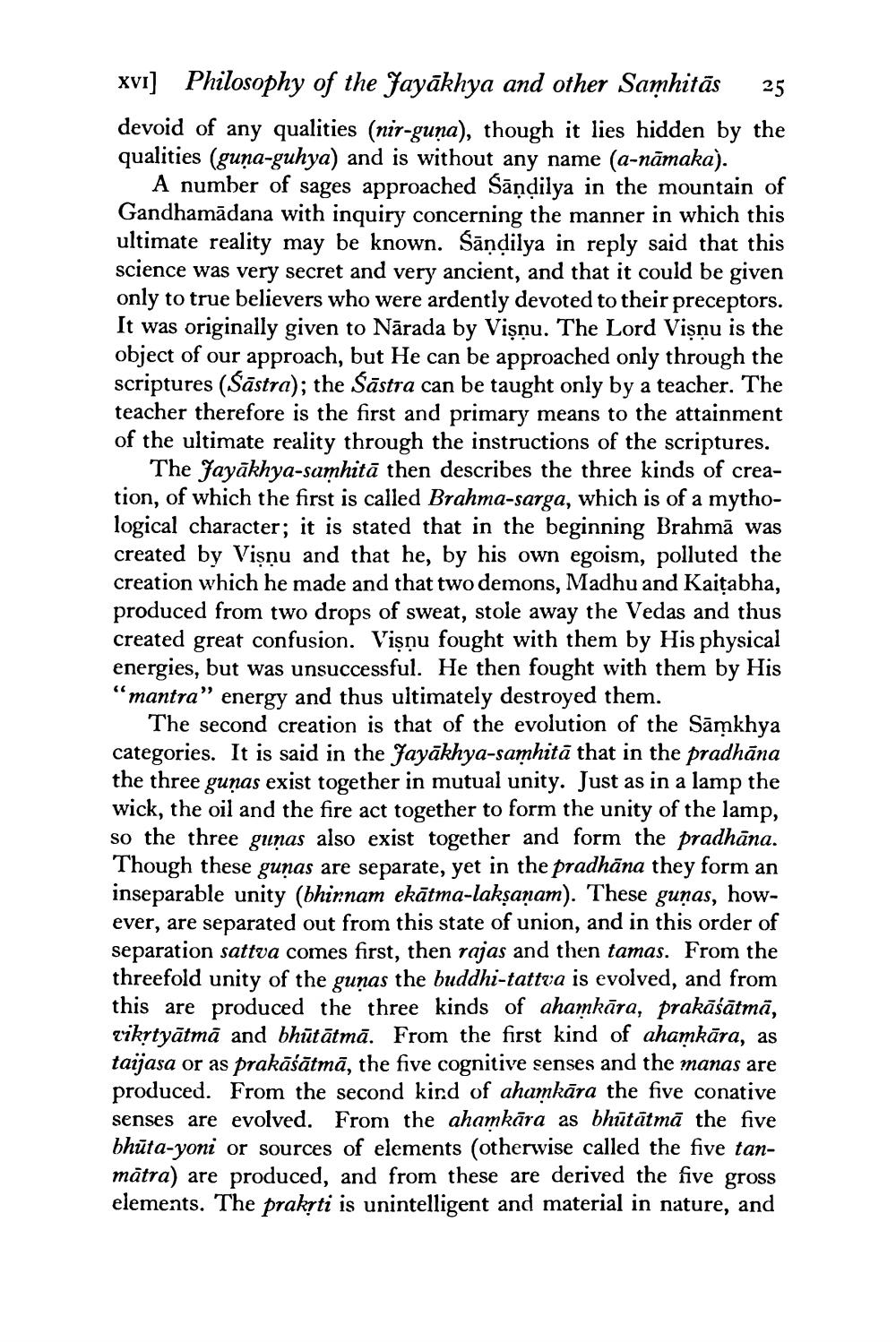________________
XVI] Philosophy of the Jayakhya and other Samhitās
25
devoid of any qualities (nir-guna), though it lies hidden by the qualities (guna-guhya) and is without any name (a-nāmaka).
A number of sages approached Sāṇḍilya in the mountain of Gandhamadana with inquiry concerning the manner in which this ultimate reality may be known. Sandilya in reply said that this science was very secret and very ancient, and that it could be given only to true believers who were ardently devoted to their preceptors. It was originally given to Nārada by Visnu. The Lord Visnu is the object of our approach, but He can be approached only through the scriptures (Sāstra); the Sastra can be taught only by a teacher. The teacher therefore is the first and primary means to the attainment of the ultimate reality through the instructions of the scriptures.
The Jayakhya-samhita then describes the three kinds of creation, of which the first is called Brahma-sarga, which is of a mythological character; it is stated that in the beginning Brahma was created by Visnu and that he, by his own egoism, polluted the creation which he made and that two demons, Madhu and Kaiṭabha, produced from two drops of sweat, stole away the Vedas and thus created great confusion. Visņu fought with them by His physical energies, but was unsuccessful. He then fought with them by His "mantra" energy and thus ultimately destroyed them.
The second creation is that of the evolution of the Samkhya categories. It is said in the Jayakhya-samhitā that in the pradhāna the three gunas exist together in mutual unity. Just as in a lamp the wick, the oil and the fire act together to form the unity of the lamp, so the three gunas also exist together and form the pradhana. Though these gunas are separate, yet in the pradhāna they form an inseparable unity (bhirnam ekātma-lakṣaṇam). These gunas, however, are separated out from this state of union, and in this order of separation sattva comes first, then rajas and then tamas. From the threefold unity of the gunas the buddhi-tattva is evolved, and from this are produced the three kinds of ahamkāra, prakāśātmā, vikṛtyātmā and bhūtātmā. From the first kind of ahamkāra, as taijasa or as prakāśātmā, the five cognitive senses and the manas are produced. From the second kind of ahamkāra the five conative senses are evolved. From the ahamkara as bhūtātmā the five bhūta-yoni or sources of elements (otherwise called the five tanmatra) are produced, and from these are derived the five gross elements. The prakṛti is unintelligent and material in nature, and




